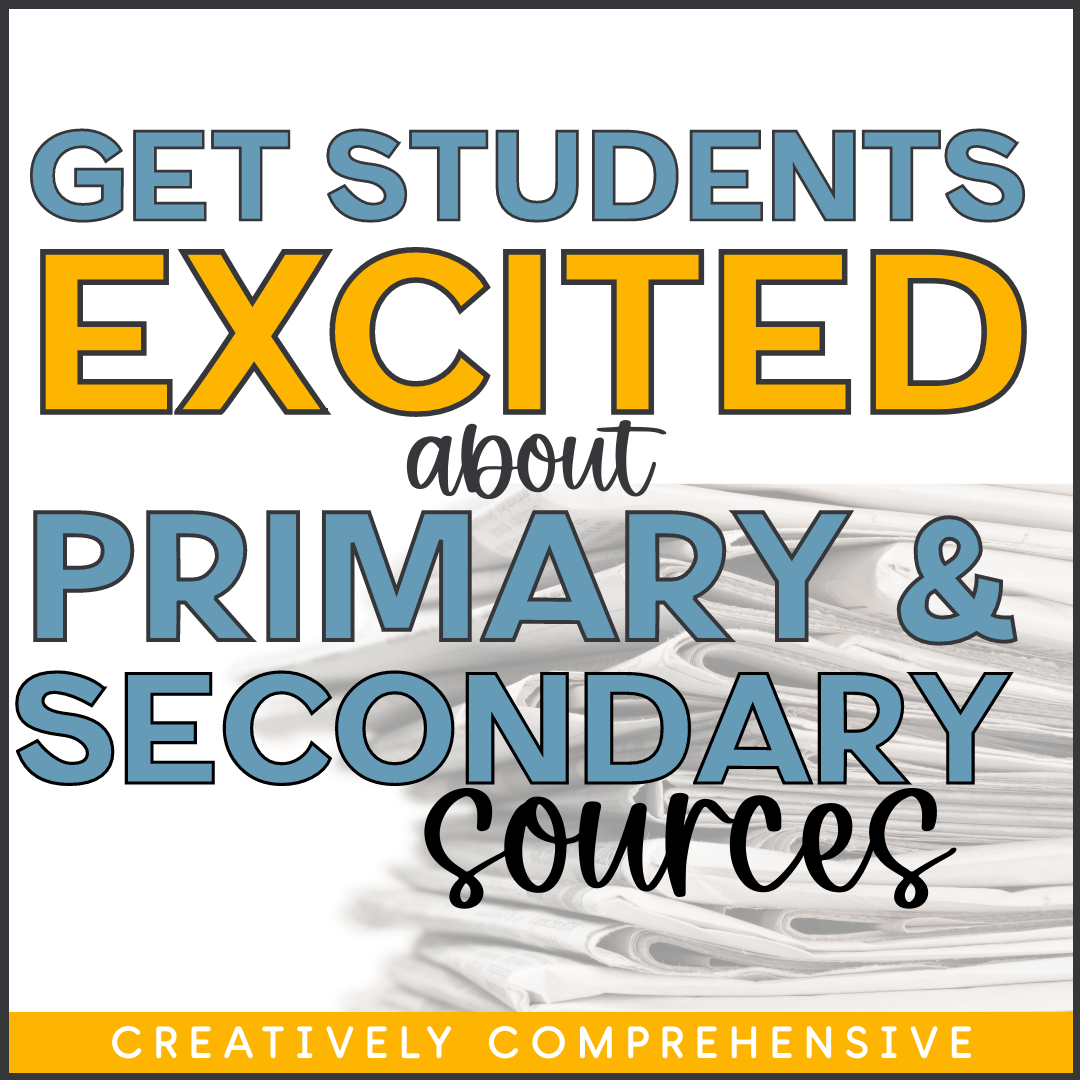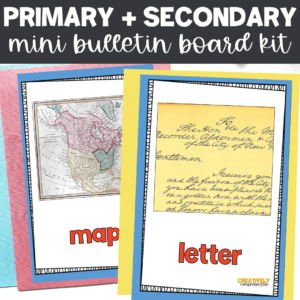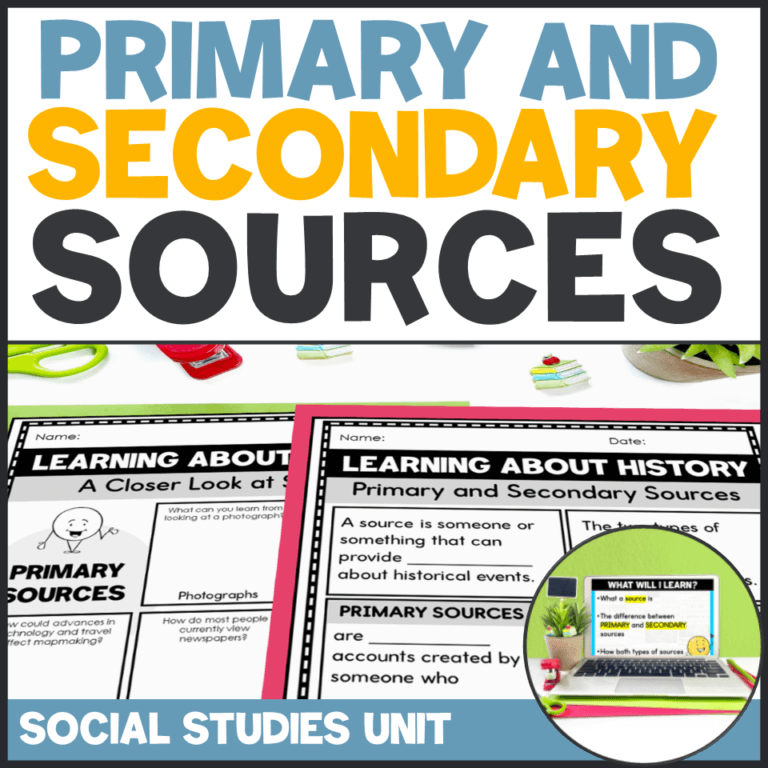The term “primary and secondary sources” has not been known to make students jump for joy. It’s understandable- most textbooks insist on introducing the topic in the most boring way possible (if they give you any resources at all). However, with a bit of creativity you can get your students interested – or even excited! – about historical documents. This blog post will share several classroom-tested activities that will have your students begging to know more about primary and secondary sources!

It is so important for students to understand the different types of sources and why/how they are used. It’s a pre-requisite for learning anything about history! Being able to analyze a source based on who created it and when puts on students on the path to becoming more informed citizens.
Why, then, do most social studies texts include about one sentence of information about this topic? My last curriculum devoted two sentences to defining the types of sources. No examples, no further information…I wanted my students to have a stronger grasp of this concept before moving on. Here’s what I did:
I Provided Clear, Kid-Friendly Definitions
Using a slideshow, I broke down each type of source in simple language that my students could understand. We used guided notes during the slideshow that were kept as a reference for the whole unit. Here are the main things I wanted my students to comprehend before we moved forward:
- Primary sources were created at the time of the event by a person who witnessed the event
- Secondary sources are created after the event. They summarize or analyze an event by using primary sources.
- There are some sources (for example, magazines) that can be considered primary or secondary, so it is important to think about who created the source and how it is being referenced.
This poster set is a great way to introduce students to types of sources by using visuals! You can grab this mini bulletin kit for free by signing up for my email list!
We Did Hands-On Practice
Using the guided notes from the previous session, students worked on a sorting activity. Whenever I do activities like this, I like to incorporate academic talk, so I had pairs of students compare their sorts when they were finished. You could also have students work on this activity in small groups.
Another activity we did was a task card scavenger hunt. Students looked for task cards I had placed around the room – each card listed a scenario in which a source was used. Students inferred whether the source was primary or secondary and wrote their responses on a recording sheet. They then met in small groups to discuss their answers.
We Looked For Examples of Primary and Secondary Sources
There are many great websites with primary sources that are free for educators to use (check out the National Archives or the Library of Congress, for starters). First, brainstorm topics students may be interested in (for example, the sinking of the Titanic, MLK’s “I Have a Dream” speech, etc.) and find related documents. Then have students search your class or school library to see if there are any secondary sources on that topic. If possible, find secondary sources that cite the primary sources they used. You might notice your students labeling things as “primary” or “secondary” sources on their own!

We Used Our New Knowledge
Once I was sure my students truly understood the difference between primary and secondary sources, it was time for them to show what they learned! For the “Future History Maker” project, students imagined a museum exhibit in the future dedicated to their favorite topic- themselves. Students created two “primary” and two “secondary” sources about themselves for their presentation (two file folders stapled together is a cheap display option). We quickly displayed the “exhibits” when everyone was finished and had a museum “reception.”
Get Your Students Excited About Primary and Secondary Sources!
The activities I described above (along with many others, including digital options!) are included in my Primary and Secondary Sources Activities resource. This resource contains two slideshows with guided notes, a sorting activity, task cards, the Future History Maker project described above with templates for each type of source, and a teacher’s guide to help you plan. I hope your students enjoy it as much as mine did!
Do you have any tips for teaching primary and secondary sources? Let us know in the comments!
Happy teaching!
Marianna


